Hedgerows
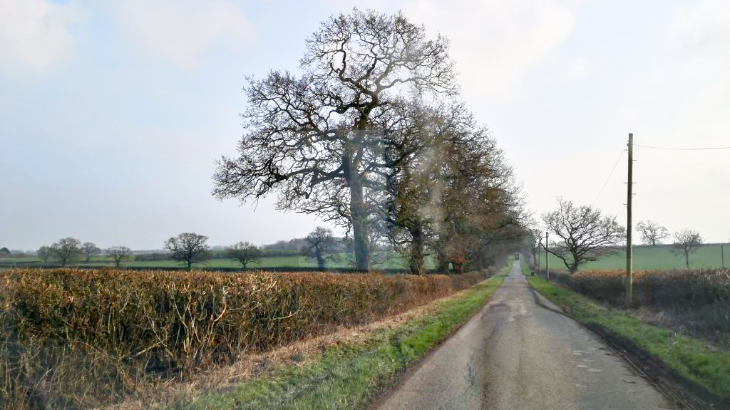
Hedgerow Survey
At the end of January 2024, the UK Centre for Ecology & Hydrology (UKCEH) released data from its map of hedgerows in the UK1.
The survey was conducted over five years using LIDAR (Light Detection and Ranging) – the same type of laser/radar that can scan through forest cover to discover ancient temples in Cambodia.
The key findings were:
· A total of 390,000 km (242,000 miles) of hedgerows (1-6 metres tall) exist on field boundaries in England – enough to go round the world almost 10 times. These important habitats support biodiversity and store carbon.
· The South-West boasts the highest hedgerow densities, led by Cornwall with an average of 5.1 km per 1km x 1km square.
· The lowest densities, excluding major urban areas, are found in Surrey (1.2 km), Hampshire (1.5 km), and Berkshire (1.7 km) per 1km x 1km square.
The History of Hedgerows
Some hedgerows are reported as going back to the Bronze Age – perhaps as fortifications. But the earliest formal hedges were boundary markers round parishes and other defined habitations. Some were planted, but some were the strip of woodland left when the forest on either side was cleared. These ancient hedgerows contain many species. As a rule of thumb, you can date a hedge by the number of species in a 30-yard length: each species corresponds to a century. Hooper’s Rule, as it is called, works as far back as 1,100 years, but does not distinguish between a Roman and an Anglo-Saxon hedge2.
Enclosing land started in Tudor times when keeping sheep for wool became more profitable than growing crops, but there was much opposition. The majority of hedges were planted at the time of the Inclosure Acts. Between 1604 and 1914 over 5,200 individual Acts enclosing public land were passed and the main Inclosure Act 1773 is still in force today3. However, when I started farming in 1970, there were government grants for removing hedgerows. (Conversely there were also grants for planting windbreaks which I took advantage of.) The case for removing hedgerows was to release more land for production, accommodate large machinery, reduce competition for water and light and crop damage from rabbits.
Listening to public debate today, you would think that hedgerows were planted for wildlife and biodiversity. That has never been the case. The plants and animals in hedgerows today originated from the edges and clearings in woodland, but even if they are no longer needed for agriculture, hedgerows are an important habitat and part of our wildlife and landscape heritage.
Hedgerow Grants
The foundation level of the government’s ‘Environmental Land Management Scheme’ (ELMS) is the ‘Sustainable Farming Incentive’ (SFI). There is a whole section on grants for hedgerows which I won’t repeat here4. It describes all the options for hedgerow management in order to qualify for payment. I was surprised how comprehensive the advice is and also surprised to find that I agree with most of it!
Hedgerow Management
Some of my neighbours complain when hedges are trimmed using a flail. The results are untidy initially but the hedge does not seem to mind and the ragged ends of branches heal quickly and do not suffer infection. The heavy flails can cope with quite thick branches and the cuttings are blown back into the hedge to avoid punctures from thorns on the road. Leaving a hedge uncut is not an option: it will develop into a row of trees and will die out at its base.
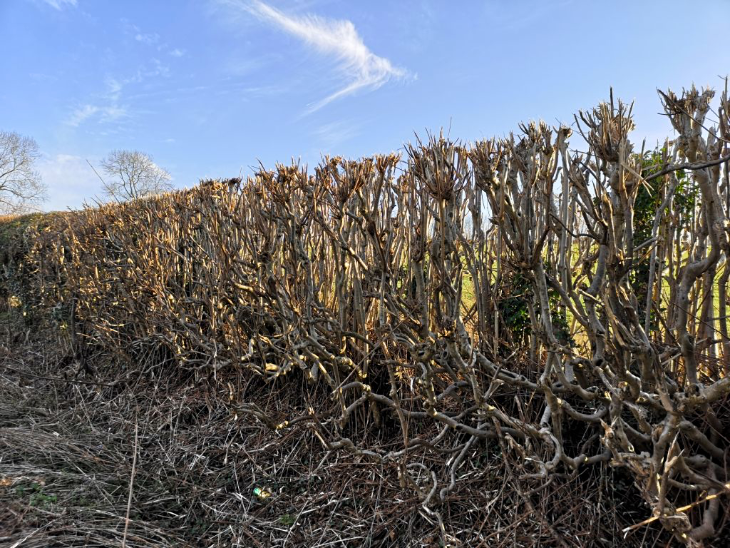
Hedges are treated differently in the first five years. Newly planted hedges are usually cut incrementally in order to encourage branches to bush out and fill the hedge.
There are many options for managing a mature hedge (over five years old). In their SFI agreement, farmers can choose which management approaches to use. Hedges can be cut annually, every other year, or on a three year cycle. Hedges can also be cut on alternate sides. It is better not to flail hard every year, but to leave longer growth as many trees and shrubs flower and fruit on two- or three-year-old wood. Cutting every second or third year leaves flowers with nectar for insects and berries or fruits for birds and small mammals. It is also recommended not to cut at exactly the same height every time.
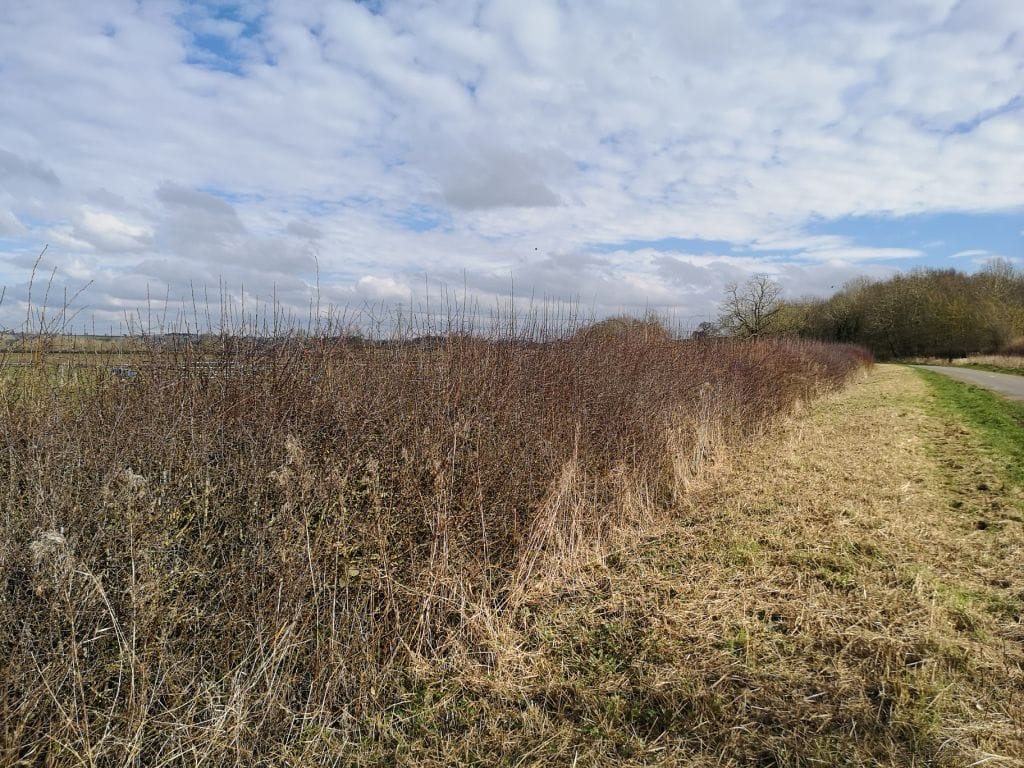
Timing of cutting can be contentious. The current law is that hedges should not be cut between March and August. Many environmentalists would like to see this put back into October or November, but they do not have to manage the farm. There are seasons of the year when farmers are very busy and do not have time or machinery for hedge-cutting. There are also times when the ground is too wet for heavy hedge-cutters. This year our neighbour was cutting on 29th February – that was cutting it a bit fine!
Finally a hedge may become old and gappy: drastic action is needed. Replanting is expensive. The easiest way to restore a hedgerow is to coppice it to ground level. Most hedgerow plants will happily grow again from the base. Unwanted species can be dug out; gaps can be filled with new saplings. The SFI recommends renewing a hedge every 25–30 years, but I see few landowners doing this.
After a hedge has been coppiced is also a good time to consider plashing or laying. This is a very labour-intensive process and unlikely to be undertaken without a grant or healthy bank balance. It does make a livestock-proof hedge without wire or fencing. Verticals are allowed to grow for 2-3 years and then partly cut through at the base leaving a small piece of wood and bark so that the wood is not quite severed. It is then bent over and secured with stakes and ‘withers’. New vertical shoots are sent up but the hedge is impenetrable at the base. It is usually necessary to repeat the process every twenty years.
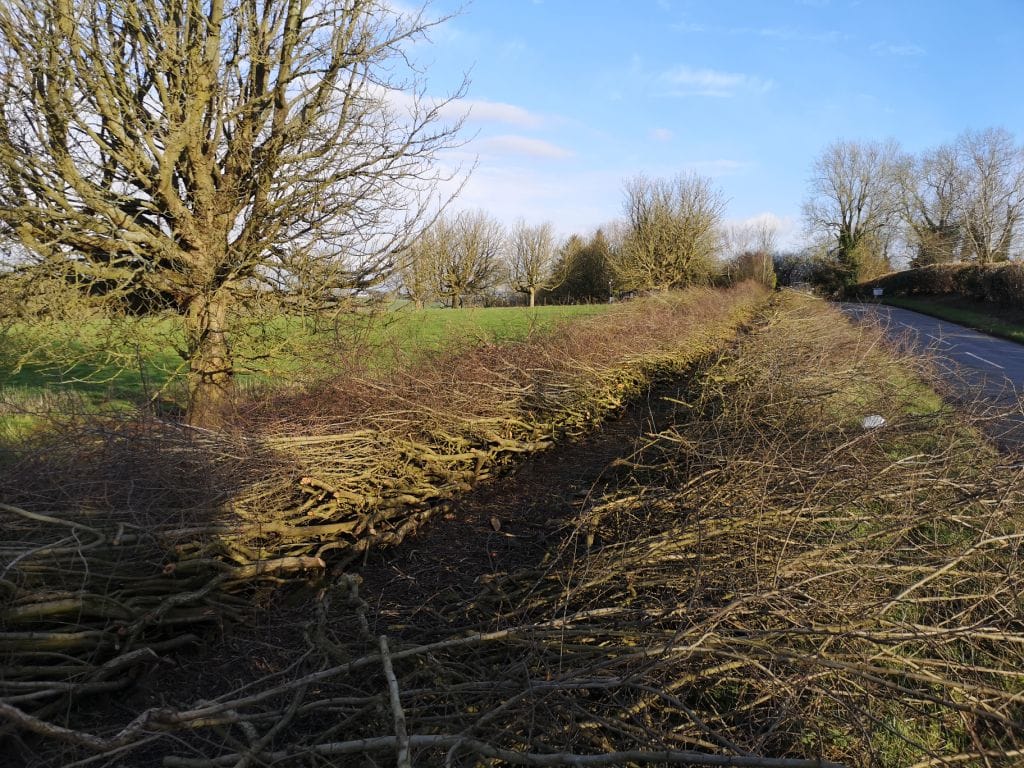
Northamptonshire, ‘the rose of the shires’, was famous for fox-hunting. Creating livestock-proof hedges without using wire which could damage jumping horses was important. While you are out in the countryside, have a look at the hedgerows to see how they are being managed. There are good and bad landowners and farmers. Use a critical eye. But before you attack your neighbouring famer, read the government advice on hedgerow management: it’s very good! Ask the farmer whether he is taking part in the SFI.
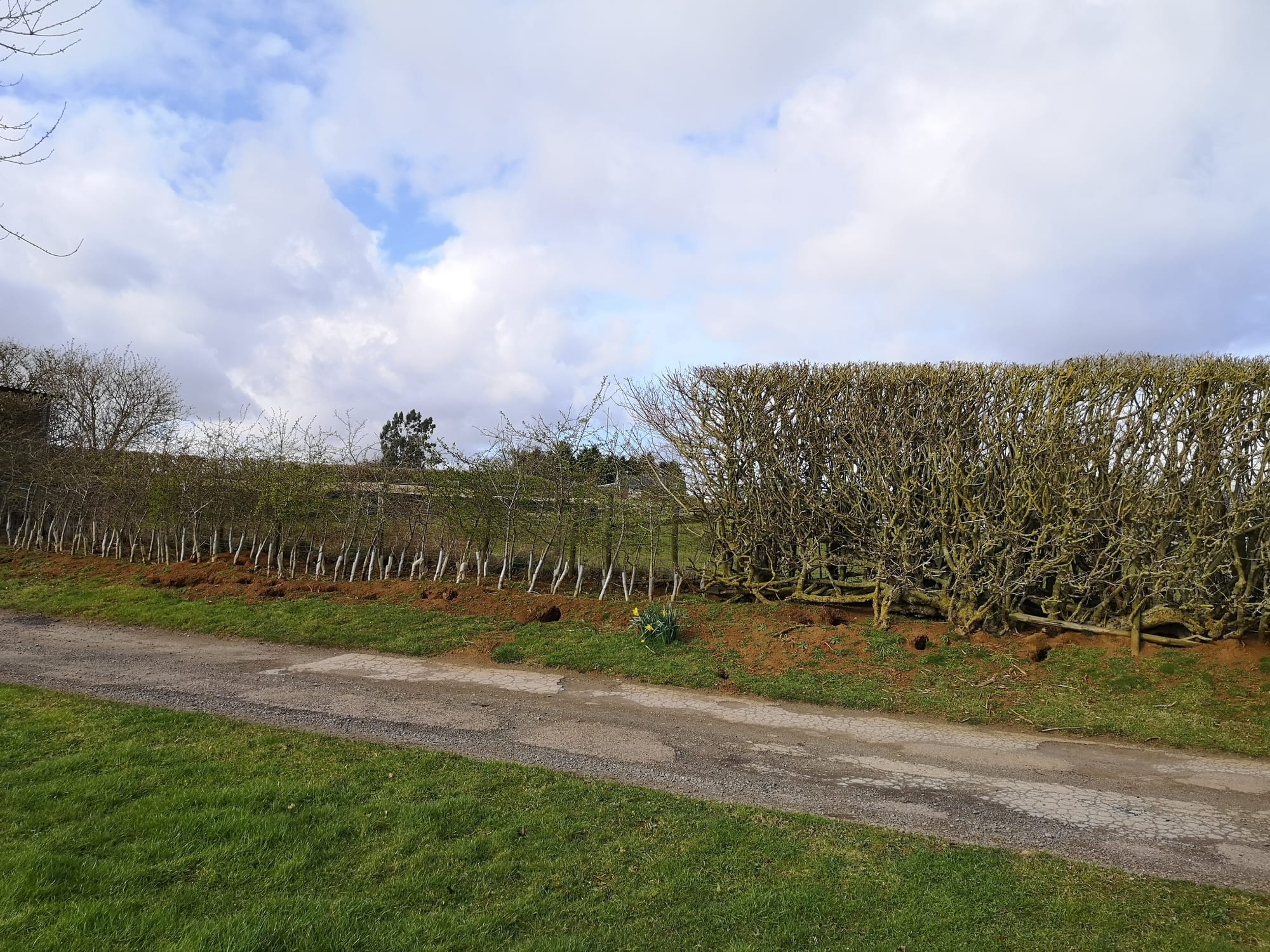
Hedgerow Trees
According to Rackham, there may be as many as 50 million trees in hedges and fields covering roughly 2 ½ per cent of the English land area. Also according to Rackham, the area under trees is considerably greater than the area of woodland and plantation. But it is difficult to find research on this. There is much information on street and urban trees and estimates of the total forest cover, but little on farmland and hedgerow trees.
In many parts of Northamptonshire, hedgerow trees are being neglected. The elms have died, the ash are dying and several others are passed their prime. But decaying wood can provide a habitat for invertebrates, nesting birds and bats. The SFI pays for hedgerow trees, including decaying ones, and as a rule of thumb there should be an average of at least one hedgerow tree per 100 metres over the total length of hedgerow. In many cases, hedgerow trees do not need to be planted. Closely examine the hedge before cutting and select a vertical stem of the species you want. Mark it with a pole and flag and tell the hedge-cutter to cut round it.
There are many species of hedgerow trees from magnificent oaks marking important boundaries down to small rowans and many fruit trees such as crab apples or sloes. It is often difficult to tell them while driving through the countryside, but at this time of year many come into flower making them immediately recognisable. You will be surprised at the number of apples you can see blossoming in the hedges in late April / early May.
To find out more about hedgerows, look out for:
National Hedgerow Week - 6-12 May
National Tree Council announcement: National Hedgerow Week returns this spring! Make sure to save the date, there are lots more details to come!
References
1. https://www.ceh.ac.uk/press/high-tech-aerial-mapping-reveals-englands-hedgerow-landscape
UKCEH Hedgerow Survey Podcast: https://audioboom.com/posts/8448529-hedgelife-390-000
2. p82, Oliver Rackham: The Illustrated History of the Countryside, 1994
3. Wikipedia: The Inclosure Acts https://en.wikipedia.org/wiki/Inclosure_Acts; The Inclosure Act 1773 https://en.wikipedia.org/wiki/Inclosure_Act_1773
4. Sustainable Farming Incentive (SFI) Hedgerows: https://www.gov.uk/guidance/sfi-actions-for-hedgerows

